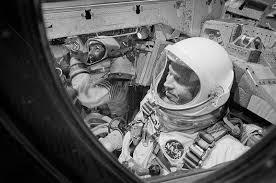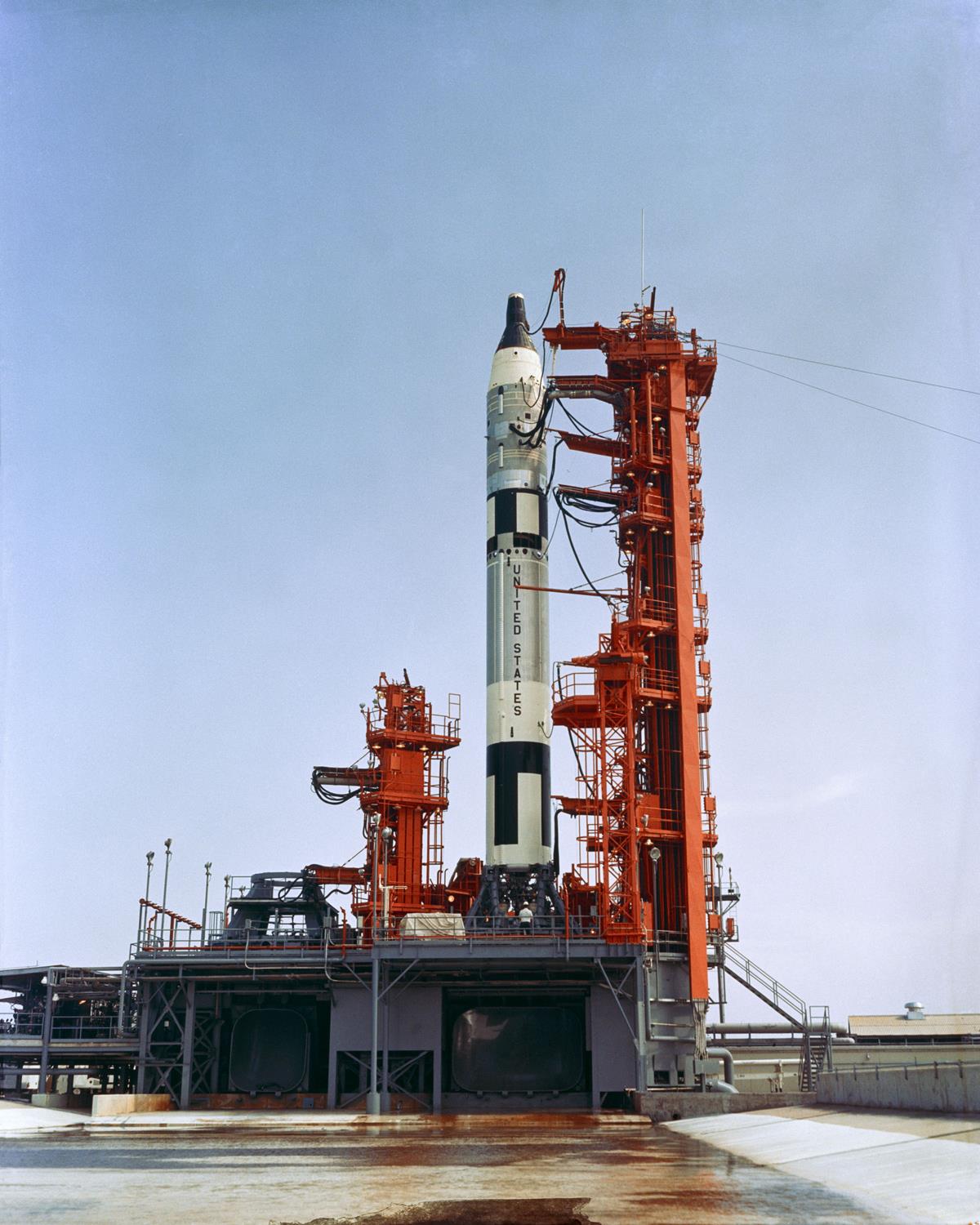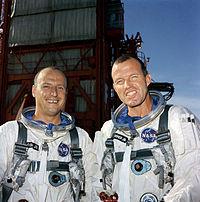Command Pilot:
L. Gordon Cooper Jr.
(Second Flight)
Pilot
Charles "Pete" Conrad Jr.
(First Space Flight)
Backup Crew:
Command Pilot: Neil A. Armstrong
Pilot: Elliot M. See Jr
Support Crew:
Command Pilot: Virgil I. "Gus" Grissom (Cape CAPCOM)
Pilot: James A. McDivitt (Houston CAPCOM)
Edwin E. "Buzz" Aldrin (Houston CAPCOM)
Neil A. Armstrong (Houston CAPCOM)
Gemini 5 (officially Gemini V) was a 1965 manned spaceflight in NASA's Gemini Programme. It was the third manned Geminiflight, the 11th manned American flight and the 19th spaceflight of all time (includes X-15 flights over 100 kilometres (62 mi)). It was also the first time an American manned space mission held the world record for duration, set on August 26, 1965, by breaking the Soviet Union's previous record set by Vostok 5 in 1963.
Astronauts:
Study
Research
Main Index
Space Cosmology
Science Research
*
About
Science Research
Science Theories
Desk
Site Map
BookShelf
Copyright © by Nigel G Wilcox · All Rights reserved · E-Mail: ngwilcox100@gmail.com
Designed by Nigel G Wilcox
Powered By AM3L1A
Pages within this section: Gemini Manned Space Flights
Gemini 5
Pages within this section:
1
M
8
SM
Sub-Menu
menu
2
3
4
5
6
7
8
9
Gemini Manned Missions
Gemini 5


Gemini 5 doubled the U.S space-flight record of the Gemini 4 mission to eight days, the length of time it would take to fly to the Moon, land and return. This was possible due to new fuel cells that generated enough electricity to power longer missions, a pivotal innovation for future Apollo flights, instead of the chemical batteries used on previous crewed spacecraft. Cooper and Conrad were to have made a practice space rendezvous with a "pod" deployed from the spacecraft, but problems with the electrical supply forced a switch to a simpler "phantom rendezvous," whereby the Gemini craft maneuvered to a predetermined position in space. Command Pilot and Mercury veteran Gordon Cooper was the first person to fly two Earth orbital missions. He and Conrad took high-resolution photographs for the United States Department of Defense, but problems with the fuel cells and maneuvering system forced the cancellation of several other experiments. The astronauts found themselves marking time in orbit, and Conrad later lamented that he had not brought along a book. On-board medical tests, however, continued to show the feasibility of longer flights.





















